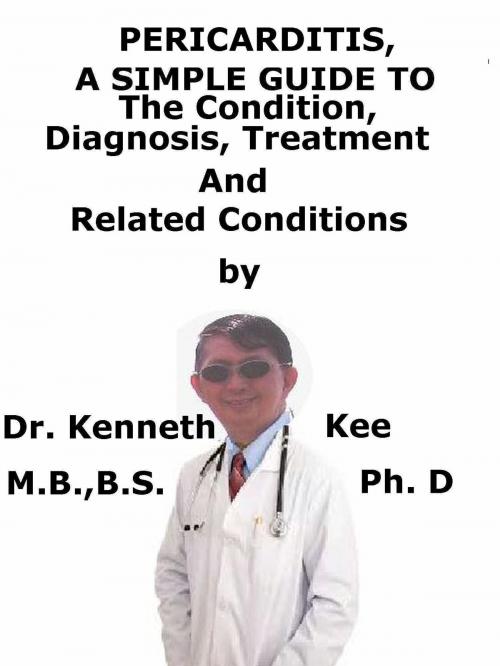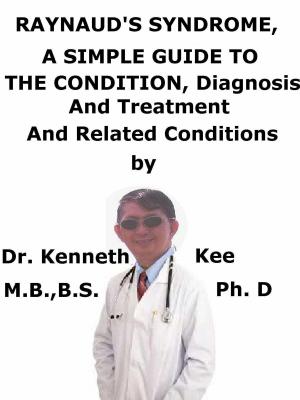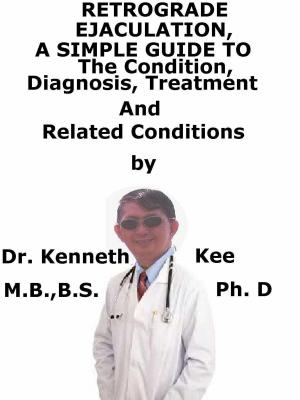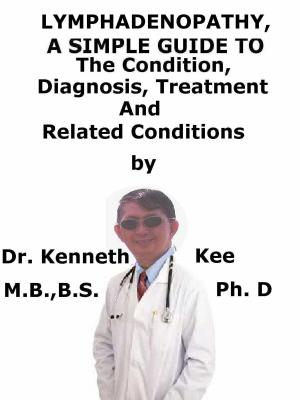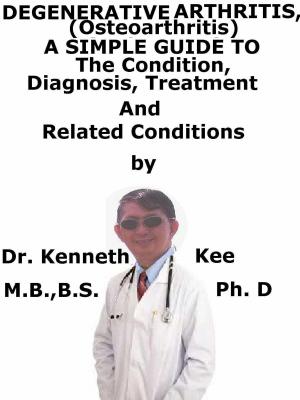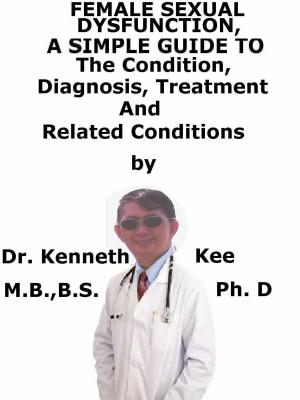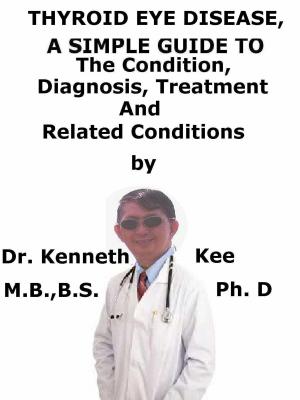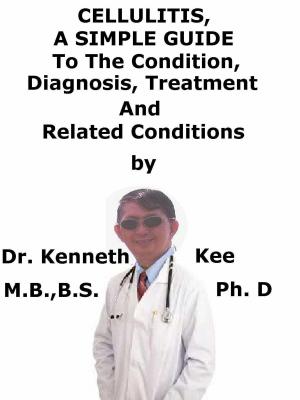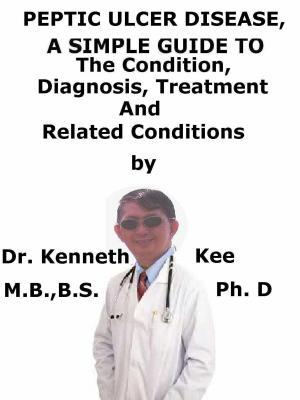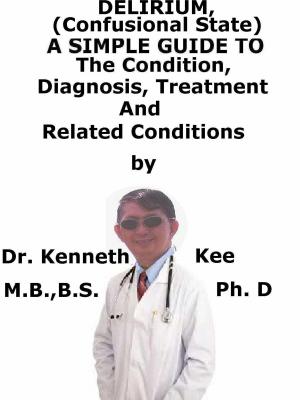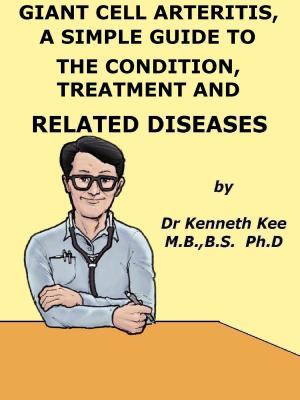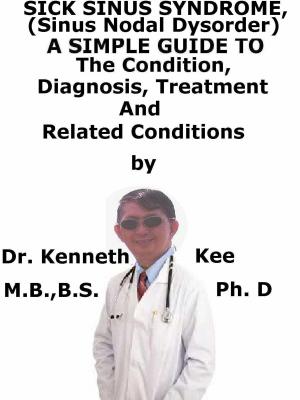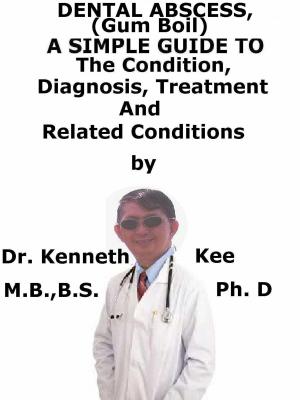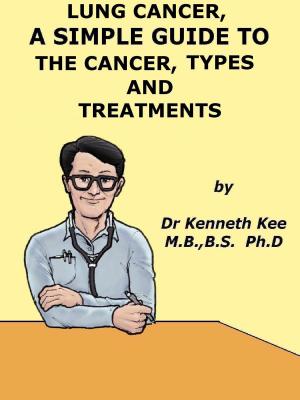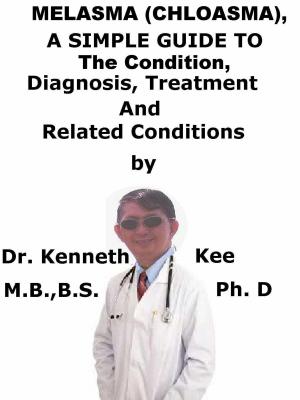Pericarditis, A Simple Guide To The Condition, Diagnosis, Treatment And Related Conditions
Nonfiction, Health & Well Being, Medical, Specialties, Internal Medicine, Cardiology, Health, Ailments & Diseases, Heart| Author: | Kenneth Kee | ISBN: | 9781370344703 |
| Publisher: | Kenneth Kee | Publication: | February 1, 2017 |
| Imprint: | Smashwords Edition | Language: | English |
| Author: | Kenneth Kee |
| ISBN: | 9781370344703 |
| Publisher: | Kenneth Kee |
| Publication: | February 1, 2017 |
| Imprint: | Smashwords Edition |
| Language: | English |
Pericarditis is a cardiac disorder where the pericardiac sac surrounding the heart and roots of the great vessels coming from the heart is inflamed.
Pericarditis is caused by:
A. Infections
1. Bacterial- streptococcus
2. Viral - cytomegalovirus, enterovirus, influenza virus, hepatitis B virus, adenovirus, and herpes simplex virus
3. Mycotic
4. Tuberculosis
B. Non- infection:
1. Autoimmune diseases include:
a. Rheumatic fever
b. Rheumatoid arthritis
c. Systemic lupus erythrematosis
d. Drug induced
2. Neoplastic
3. Uremia
4. Myxedema
5. Trauma
6. Myocardial infarction
7. Myocarditis,
8. Dissecting aortic aneurysm,
9. Radiation
Symptoms:
1. Chest pain of sudden onset in the anterior chest
2. Pain is sharp and becomes worse with inspiration due to pleural inflammation.
3. Pain is relieved with sitting up and leaning forward and become worse on lying down
4. Pericardial rub is a typical sign of acute pericarditis.
This rub is best heard at the left sternal border as a squeaky or scratching sound using the diaphragm of the stethoscope.
The pericardial rub is due to the friction generated by the two inflamed layers of the pericardium.
Diagnosis is by:
Classic feature of chest pain and dyspnea with pericarditis
ECG can be diagnostic in acute pericarditis and evolves in 4 stages.
Stage 1 accompanies the onset of acute pain
Stage 2 occurs several days later with the return of the ST segment to baseline
Stage 3 ECG changes are T waves become inverted in stage 3 but without Q-wave formation
Stage 4 ECG changes are the ECG returns to the prepericarditis baseline weeks to months after the initial onset
The T-wave inversion may persist indefinitely in the chronic inflammation observed with tuberculosis, uremia, or neoplasm
However, only 50% of patients with pericarditis experience all 4 stages.
An important ECG finding is PR-segment depression, which has been reported in as many as 80% of viral pericarditis cases.
MRI is sensitive for detecting pericardial effusion and loculated pericardial effusion and thickening.
Pericardiocentesis is relatively safe when guided by echocardiography, especially with large free anterior effusion
Treatments may include medicines and, less often, procedures or surgery.
Medical treatment are:
Antibiotics
NSAIDs
Surgical procedures for pericarditis include pericardiectomy, pericardiocentesis, pericardial window placement, and pericardiotomy.
Pericardiectomy is the most effective surgical procedure for managing large effusions, because it has the lowest associated risk of recurrent effusions
TABLE OF CONTENT
Introduction
Chapter 1 Pericarditis
Chapter 2 Causes
Chapter 3 Symptoms
Chapter 4 Diagnosis
Chapter 5 Treatment
Chapter 6 Prognosis
Chapter 7 Coronary Heart Disease
Chapter 8 Cardiomyopathy
Epilogue
Pericarditis is a cardiac disorder where the pericardiac sac surrounding the heart and roots of the great vessels coming from the heart is inflamed.
Pericarditis is caused by:
A. Infections
1. Bacterial- streptococcus
2. Viral - cytomegalovirus, enterovirus, influenza virus, hepatitis B virus, adenovirus, and herpes simplex virus
3. Mycotic
4. Tuberculosis
B. Non- infection:
1. Autoimmune diseases include:
a. Rheumatic fever
b. Rheumatoid arthritis
c. Systemic lupus erythrematosis
d. Drug induced
2. Neoplastic
3. Uremia
4. Myxedema
5. Trauma
6. Myocardial infarction
7. Myocarditis,
8. Dissecting aortic aneurysm,
9. Radiation
Symptoms:
1. Chest pain of sudden onset in the anterior chest
2. Pain is sharp and becomes worse with inspiration due to pleural inflammation.
3. Pain is relieved with sitting up and leaning forward and become worse on lying down
4. Pericardial rub is a typical sign of acute pericarditis.
This rub is best heard at the left sternal border as a squeaky or scratching sound using the diaphragm of the stethoscope.
The pericardial rub is due to the friction generated by the two inflamed layers of the pericardium.
Diagnosis is by:
Classic feature of chest pain and dyspnea with pericarditis
ECG can be diagnostic in acute pericarditis and evolves in 4 stages.
Stage 1 accompanies the onset of acute pain
Stage 2 occurs several days later with the return of the ST segment to baseline
Stage 3 ECG changes are T waves become inverted in stage 3 but without Q-wave formation
Stage 4 ECG changes are the ECG returns to the prepericarditis baseline weeks to months after the initial onset
The T-wave inversion may persist indefinitely in the chronic inflammation observed with tuberculosis, uremia, or neoplasm
However, only 50% of patients with pericarditis experience all 4 stages.
An important ECG finding is PR-segment depression, which has been reported in as many as 80% of viral pericarditis cases.
MRI is sensitive for detecting pericardial effusion and loculated pericardial effusion and thickening.
Pericardiocentesis is relatively safe when guided by echocardiography, especially with large free anterior effusion
Treatments may include medicines and, less often, procedures or surgery.
Medical treatment are:
Antibiotics
NSAIDs
Surgical procedures for pericarditis include pericardiectomy, pericardiocentesis, pericardial window placement, and pericardiotomy.
Pericardiectomy is the most effective surgical procedure for managing large effusions, because it has the lowest associated risk of recurrent effusions
TABLE OF CONTENT
Introduction
Chapter 1 Pericarditis
Chapter 2 Causes
Chapter 3 Symptoms
Chapter 4 Diagnosis
Chapter 5 Treatment
Chapter 6 Prognosis
Chapter 7 Coronary Heart Disease
Chapter 8 Cardiomyopathy
Epilogue
